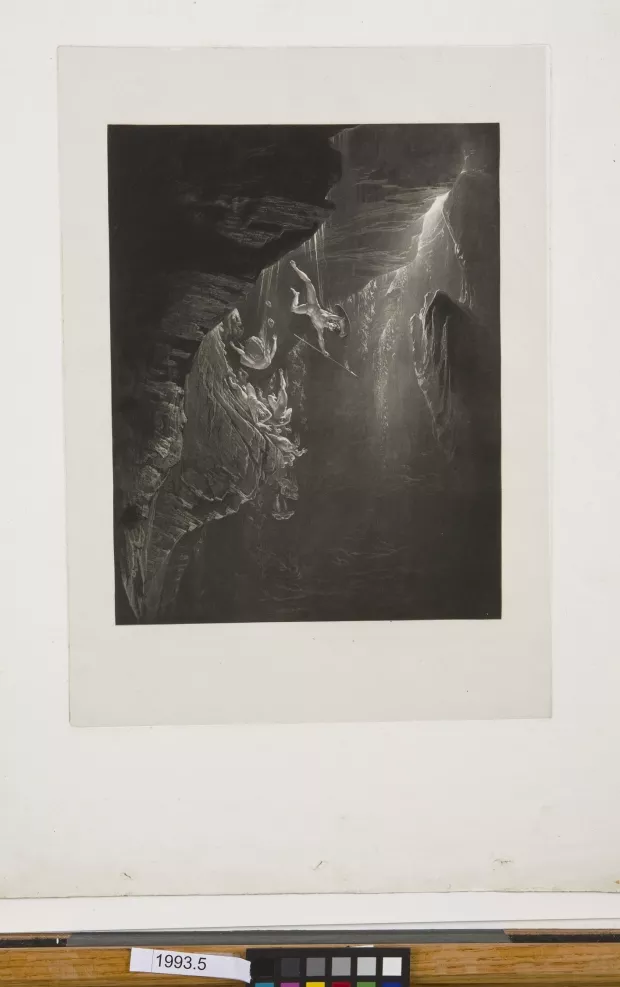Creation Date
1826
Height
35 cm
Width
25 cm
Medium
Genre
Description
John Martin was one of the most popular artists of his day. The artist Thomas Cole, the author Victor Hugo, and the composer Hector Berlioz all drew inspiration from Martin’s work. He was one of the few painters who did his own engravings. The text of Paradise Lostitself was also a consistent source of inspiration for Romantic art. The “Pandemonium” scene, in which Satan gathers his armies by the lake of fire, was the main attraction in Jean-Phillipe de Loutherbourg’s Eidophusikon in 1782; a critic described the image as “one of the most sublime spectacles ever produced by the hand of science” (McCalman 192). The idea of the Romantic hero—the rebellious, independent, ambitious, and often outcast, individual—cast the character of Satan in a new light, and contributed to re-interpretations of the poem. To complement this renewed interest in Milton's epic, new printing technologies made it possible to illustrate older works. The dramatic light and dark effects of Martin’s mezzotints were a perfect fit for the supernatural drama of Paradise Lost (Balston 99).
Lucifer and his fellow angels are cast out of Heaven, falling into a deep chasm with sheer rock walls textured by what appears to be tree roots. The chasm is illuminated by light from the opening through which the angels fall, but it is otherwise in deep shadow. The angels grasp their spears and shields as they plummet into the seemingly bottomless pit, simultaneously stuck by falling stones. The stark contrast between light and shadow given in the mezzotint shows the dramatic difference between Heaven (the light) and Hell (the blackness at the bottom of the chasm). The image offers something of the sublime, indicating a paradise above and a nightmare below that are themselves unseen.
Associated Persons
Associated Works
Copyright
Copyright 2009, Chazen Museum of Art, University of Wisconsin-Madison
Publisher
Septimus Prowett
Collection
Accession Number
1993.5
Additional Information
Bibliography
Balston, Thomas. John Martin, 1799-1854, his Life and Works. London: Duckworth, 1947. Print.
McCalman, Iain. Sensation & Sensibility: Viewing Gainsborough's Cottage Door. Ed. Ann Bermingham. New Haven: Yale Center for British Art, 2005. Print.
Wees, J. Dustin. Darkness Visible: the Prints of John Martin. Williamstown: Sterling & Francine Clark Art Institute, 1986. Print.

